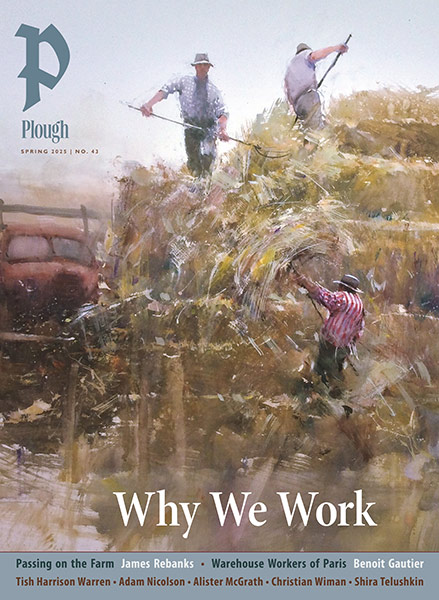Subtotal: $
Checkout-

In the Holy Land, Seeking the Solace of the Cross
-

Good Cops
-

Work that Glorifies God
-

Following the Clues of the Universe
-

Poem: “The Eye”
-

Why I Love Metalworking
-

Stanley Hauerwas’s Provocations
-

Who Will Help a Stranded Manatee?
-

The Story Behind Handel’s Messiah
-

A Delicious History of a Humble Fruit
-

Readers Respond
-

Feeding Neighbors with America’s Grow-a-Row
-

Dancing with Neighbors
-

The Rewards of Elder Care
-

Ora et Labora: The Benedictine Work Ethic
-

Rednecks and Barbarians of France
-

The Third Act of Work
-

Confessions of a Former Hack
-

A Small-Town Dentist Chooses to Stay
-

The Quest to Emancipate Labor
-

Passing On the Farm to My Daughter
-

Warehouse Workers of Paris Find Their Voice
-

Building Solidarity in Europe’s Gig Economy
-

The Improbable Revival of the Cloister
-

Sailing with the Greeks
-

The Workism Trap
-

Building the Sow Shed
-

The Divine Rhythm of Work and Sabbath
-

The Work of the Poet

The Apurímac Clinic: A Photo Essay
In Peru’s altiplano, a truck brings medical care to remote Quechua communities.
By Maria Novella De Luca, Monica Pelliccia and Alice Pistolesi
May 17, 2025
Available languages: Español
Next Article:
Explore Other Articles:
Survival can be complex in the south-central peaks of the Peruvian mountains, 13,000 feet above sea level, and when medical treatment is required it is more complex still. But for over a decade, an NGO run by an Augustinian foreign mission – the Apurímac ETS – has brought doctors into the Andes to provide medical care for indigenous Quechua communities. Difficult to access due to poor roads, the Apurímac region is one of the most impoverished in the country. Cardiovascular and chronic respiratory diseases, cancer, and diabetes are leading causes of death in the region, and these health problems are often compounded by poor hygiene and nutrition, a subsistence economy, and low literacy.

Medical care is provided for indigenous Quechua communities. All photography by Maria Novella De Luca. Used by permission.
In 2024, the NGO carried out five health campaigns in fifteen villages, providing medical care to more than three thousand people. Each team uses a truck fitted with a specialized mobile unit, a laboratory, and a pharmacy. “In almost ten years of activity, we’ve encountered a lot of chronic diseases linked to the high-altitude living conditions, such as thermal shock and dermatitis caused by the sun,” explains Vittorio Villa, director of Apurímac ETS. “Also, dental disease and diabetes are common, as people tend to consume very sugary foods and drinks. Anemia and other nutritional diseases are also prevalent, linked to a poor diet consisting almost exclusively of chicken, rice, and potatoes.”
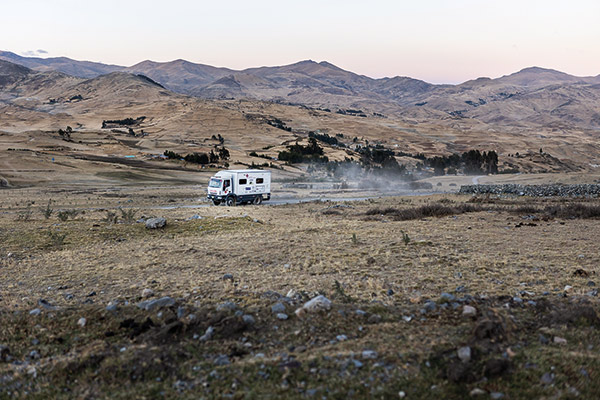
The Apurímac ETS mobile clinic travels to a mountain village.
The medical support does not end with the truck visits. In the past few years, the NGO has introduced telemedicine in twenty-one communities, providing equipment and training to local nurses, laboratory technicians, and doctors.
Baby Yessly
Baby Yessly, nine months old, has been diagnosed with microcephaly. Her mother, Yanina, age nineteen, and her grandmother arrived on foot and approached the truck asking for medical assistance.

Yessly with her mother and grandmother.
Appropriate therapy, however, is only available at the hospital in the nearby city of Cusco. Yanina was abandoned by her husband and is currently living with her parents who are helping her as well as coping with many difficulties of their own. As the family was unable to afford the trip to the city, the NGO’s medical staff took Yessly and Yanina to Cusco, where the baby will receive therapy to improve mobility in her legs and hands and strengthen her head posture. “We never leave our patients alone,” explains a medical staffer traveling on the truck, “They are people who have never been to the city and feel lost and afraid there. So from the first home visit to the meetings with specialists, there will always be someone with them to help them communicate with the doctors, and to take care of their food and any other needs they may have.”
Edison
Edison is twelve years old and has Noonan syndrome, a genetic condition characterized by short stature, facial dysmorphism, muscle contractures, and cardiomyopathy. His gait, speech, and language skills are severely affected, and he has low self-esteem. His father, who brought him to the healthcare team, only speaks Quechua, so his sister interprets into Spanish for the doctors. “Edison is so young; he has many years ahead. He needs support and physical therapy,” explains a health worker. “He struggles with some of the simplest movements.” The team hopes to give him more self-confidence with physical therapy and neurological treatments.

Edison with his father and sister.
Edith Giovanna Villegas Alfaro
Edith Giovanna Villegas Alfaro and her daughter Alizon Brenda are part of the caravan’s medical staff. Edith, fifty-five, lives in Abancay City, a town in the Apurímac region, and works as a laboratory technician in the Metropolitan Health Center. Edith has already carried out ten health campaigns in Quechua communities with the NGO. “I love going on the campaigns because I can see the changes in the communities over the years,” she says. “What I like most is to work in tranquility: out here, we forget the city and can totally dedicate ourselves to the patients who need us the most.”
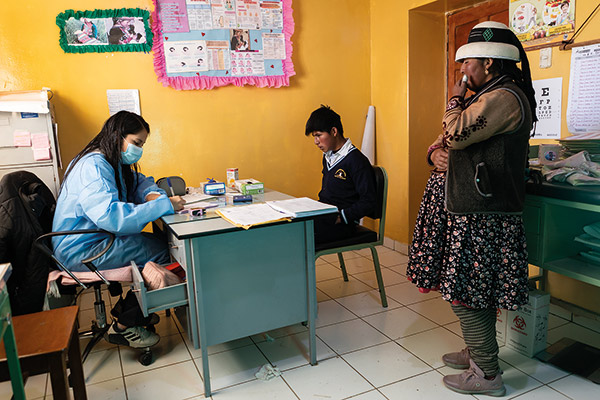
Alizon Brenda.
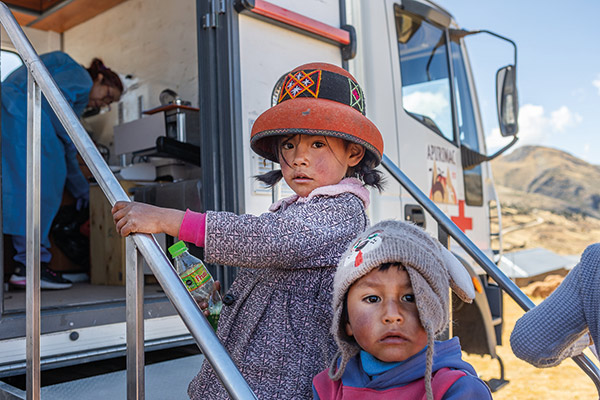
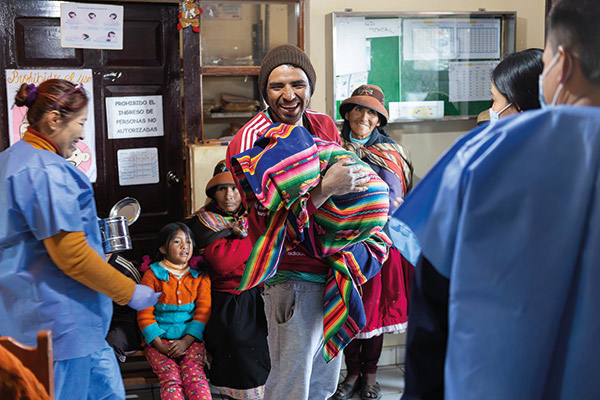
Edith Giovanna Vellegas Alfaro.
Already a subscriber? Sign in
Try 3 months of unlimited access. Start your FREE TRIAL today. Cancel anytime.





